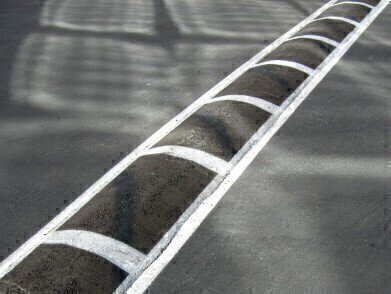Air Clean Up
Should We Remove Speed Bumps?
Aug 13 2017
The UK government has told local councils that they should prioritise efficiency and “optimise traffic flow” on roadways, in part through the removal of speed bumps. Initially intended to prevent accidents and speeding in residential areas, it is now feared that the bumps simply encourage increased acceleration and deceleration, leading to greater amounts of pollution.
The announcement is just one component of the current government’s planned measures to improve air quality and reduce transport-related pollution. Having been taken court several times by environmental law firm ClientEarth for their inability to deal with the nation’s terrible urban air quality, the government are now seeking to curb emissions in any way possible.
An urban crisis
For several years now, cities and towns across the UK have exceeded EU legal limits for air pollution, resulting in tens of thousands of premature deaths and millions of pounds’ worth of penalties. Indeed, it’s thought that 59% of the British population are subjected to unhealthy levels of air quality on a daily basis, endangering their long-term health.
In particular, Leeds and Sheffield have been identified as “blackspots” for pollution, though the truth is that most urban centres contain well over the threshold of 40mg/m3 of nitrogen dioxide (NO2). Meanwhile, levels of other pollutants such as particulate matter 2.5 (PM2.5) are also thought to be worryingly high.
As a result, the UK government have posited a number of measures in order to try and improve urban air quality, including a raft of adjustments to the infrastructure of our roadways.
“Sleeping policemen” soon off duty
Back in May this year, the government first raised the idea that speed bumps could be to blame for much of the pollution that plagues inner-city streets. The announcement came in the wake of a report by Imperial College London which found that diesel cars could produce 98% more NO2 when it traversed a speed bump as opposed to a speed cushion.
That’s because the bump encompasses the entire width of the road, forcing cars to slow right down, instead of cushions which encourage smoother driving. With that in mind, Environmental Secretary Michael Gove has suggested local councils should optimise traffic flow by replacing speed bumps with cushions and altering the placement of traffic lights to encourage a steadier speed in cars.
RAC spokesman Simon Williams approved of the idea, telling the Daily Mail: “We welcome the news on speed bumps, but we still need traffic-calming measures. Some speed bumps can be too severe, so from a road traffic safety point of view, speed cushions will be more effective. I think motorists will welcome this.”
Too little, too late?
Critics of the government have said that measures such as this do not go nearly far enough in addressing the catastrophic state of our airwaves. At present, there are also low emissions zones (LEZs) in Brighton, London, Norwich, Nottingham and Oxford which impose charges on higher polluting vehicles from entering their limits.
Additionally, London Mayor Sadiq Khan has announced he will bringing in an ultra low emissions zone (ULEZ) in the capital in April 2019, a full year ahead of schedule. However, critics have blasted the government for not introducing ULEZs in enough places around the country (notably, the two blackspots identified above are not covered).
Indeed, ClientEarth is taking the government to court for a third time this year over its perceived inaction on air quality. In both previous instances, the Conservatives have lost against the environmental law firm, both in the Supreme Court and the High Court.
Events
May 05 2024 Seville, Spain
May 13 2024 Munich, Germany
May 23 2024 Beijing, China
May 23 2024 Beijing, China
Jun 10 2024 Algiers, Algeria














